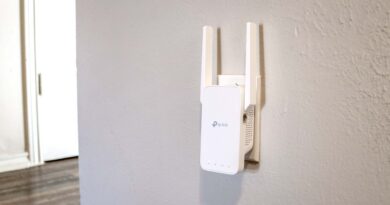Netgear Router Not Working? Try This
Netgear Router Not Working? Try This – Experiencing issues with your Netgear router can be frustrating, especially in an age where a stable internet connection is essential for both work and leisure. Whether you’re dealing with dropped connections, slow speeds, or a complete network outage, here’s a comprehensive guide to troubleshoot and resolve common Netgear router problems.
- Check Your Connections
Before diving into advanced troubleshooting, ensure that all cables are securely connected. The power cable should be plugged into a working outlet, and the Ethernet cables should be securely connected to both the router and modem. Loose or damaged cables can often be the root cause of connectivity issues.
- Restart Your Router
A simple restart can resolve many minor issues. To do this, unplug the router’s power cable, wait for about 10 seconds, and then plug it back in. Allow the router a few minutes to fully reboot. This process can refresh your network connection and clear any temporary glitches.
- Update Firmware
Outdated firmware can cause various issues. To update your router’s firmware:
Connect your computer to the router via Ethernet.
Open a web browser and enter your router’s IP address (commonly 192.168.1.1 or 192.168.0.1).
Log in with your admin credentials.
Navigate to the Firmware Update section and follow the instructions to download and install the latest firmware version.
Updating firmware can enhance performance and security, addressing many bugs and issues.
- Check for Interference
Wireless interference from other electronic devices can affect your Wi-Fi performance. Common culprits include microwaves, cordless phones, and other Wi-Fi networks. Try relocating your router to a central location, away from potential sources of interference, and ensure it’s elevated off the floor for better signal distribution.
- Change Wi-Fi Channel
Routers broadcast on specific channels, and if many nearby networks use the same channel, it can cause congestion and slow speeds. Access your router settings as described above, find the Wireless Settings section, and try changing the Wi-Fi channel. Channels 1, 6, and 11 are typically the best options for 2.4 GHz networks.
- Factory Reset
If problems persist, a factory reset can be a last resort. This will erase all your custom settings, so make sure to back up any important configurations first. To reset your Netgear router:
Locate the Reset button (usually a small pinhole) on the back of the router.
Use a paperclip or similar object to press and hold the button for about 10 seconds.
Release the button and wait for the router to reboot.
After the reset, you’ll need to reconfigure your network settings.
- Check for ISP Issues
Sometimes the issue isn’t with your router but with your Internet Service Provider (ISP). Contact your ISP to check if there are any known outages or issues in your area. They can also run diagnostics to determine if there’s a problem with your service.
- Advanced Troubleshooting
For persistent issues, consider the following advanced troubleshooting steps:
Disable QoS (Quality of Service): QoS settings can sometimes cause problems. Disable it temporarily to see if performance improves.
Check Device Limits: Ensure your router isn’t overwhelmed by too many connected devices. Disconnect some devices to see if the performance improves.
Inspect Router Logs: Access your router’s administrative interface and check the logs for any error messages or unusual activity that could indicate the problem.
- Consider Hardware Issues
If none of these steps resolve the issue, it’s possible that your router hardware may be failing. If the router is old, consider upgrading to a newer model that supports the latest standards and technologies. Netgear offers a range of reliable routers, so check their latest offerings to find one that suits your needs.
Conclusion
Dealing with a malfunctioning Netgear router can be a hassle, but by following these troubleshooting steps, you can often resolve the issue quickly and get back online. From simple resets to firmware updates and advanced settings tweaks, these tips cover a wide range of potential solutions. If all else fails, don’t hesitate to reach out to Netgear support for professional assistance. With the right approach, you can ensure a stable and reliable internet connection for all your needs.




